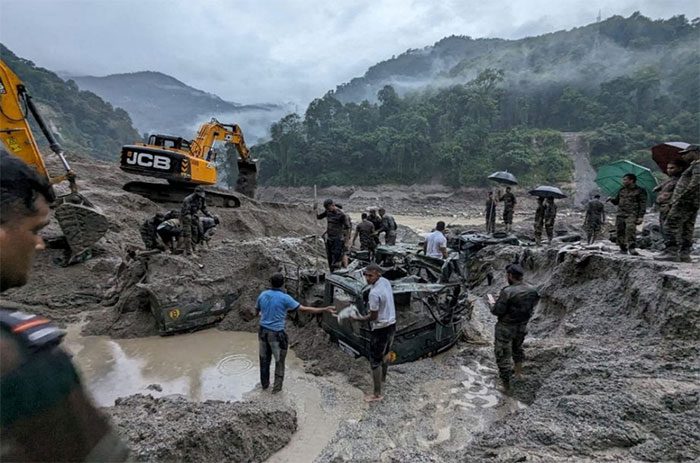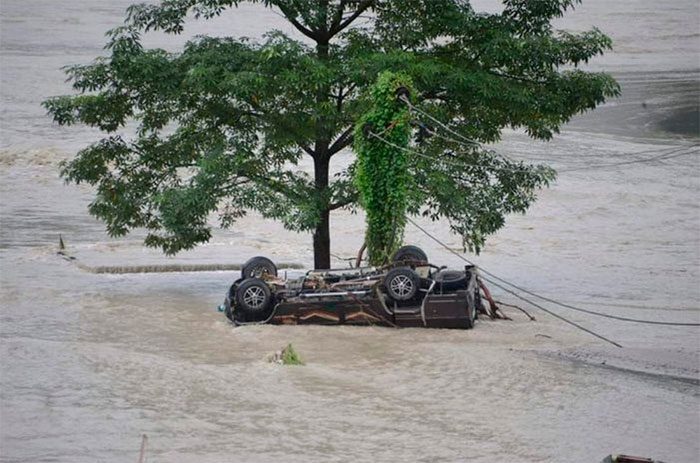The water of one of the highest lakes in the world is rising as global temperatures increase.
In 2021, scientists studying glacial lakes formed from melting ice in the Himalayas of India warned that a lake could pose a danger to nearby residents. Until last week, this warning became prophetic when the lake overflowed into the valley below.
After a night of heavy rain, on October 4, South Lhonak Lake at an altitude of 5,180 meters breached its banks. A massive amount of water flowed into the Teesta River, which runs through the state of Sikkim to the Bay of Bengal. The flood destroyed much of the dam in Chungthang, part of the largest hydropower project in the state.
More than 100 people were swept away in the flash flood in Sikkim, including around 20 soldiers. At least 30 people have been confirmed dead. The flooding destroyed infrastructure across the state, including bridges, isolating many villages and hampering rescue efforts.

Floodwaters bury cars in Sikkim, India. (Photo: Reuters).
Scientists call this a glacial lake outburst flood disaster. This phenomenon is expected to occur more frequently as the climate warms. Typically, melting ice threatens coastal populations due to rising sea levels. However, millions of people living along the towering Himalayas also face this threat.
At the Divecha Center for Climate Change at the Indian Institute of Science, scientist Anil Kulkarni stated that all glaciers in the Himalayas are melting. “Thousands of new lakes will form in the next 1-2 decades,” he said.

The disaster occurred after an unusually rainy summer in northern India. (Photo: AP).
South Asia is considered one of the most vulnerable regions to climate change. Rising temperatures are causing heatwaves to occur more frequently, as seen in India and Pakistan in 2022. Climate change was also a contributing factor to the heavy rainfall in Pakistan in 2022 that resulted in over 1,000 deaths.
The Sikkim state government initially attributed the lake’s breach mainly to the heavy rainfall. However, satellite images show a much more complex issue. Scientists and glaciologists indicate that part of the natural ice wall seems to have collapsed, causing rocks and ice to fall into the lake. The debris created a “tsunami” effect from above.
“One of the embankments beside the lake just collapsed,” said mountain hydrologist Jakob Steiner. The underlying cause is the melting of the permafrost inside. Rainwater acted as a “catalyst” that caused these large chunks to break loose. The collapse of the glacial lake may also have been triggered by an avalanche or landslide.

Satellite image of the lake after it breached its banks. (Source: Reuters).
Before breaching, this glacial lake had gradually expanded over decades due to the melting glaciers in the Himalayas. According to the Sikkim state government, the lake’s area measured 44 acres in 1979. By last week, its area had increased to 400 acres.
Following the flood, the National Disaster Management Authority of India announced plans to install early warning systems at several glacial lakes at high risk of breaching.
Hydrologist Steiner noted that over time, areas at the foot of the Himalayas will no longer be safe for residents. He stated that the amount of water released is so great that it cannot be controlled by engineering. Like rising sea levels, people can only evacuate these dangerous areas.


















































